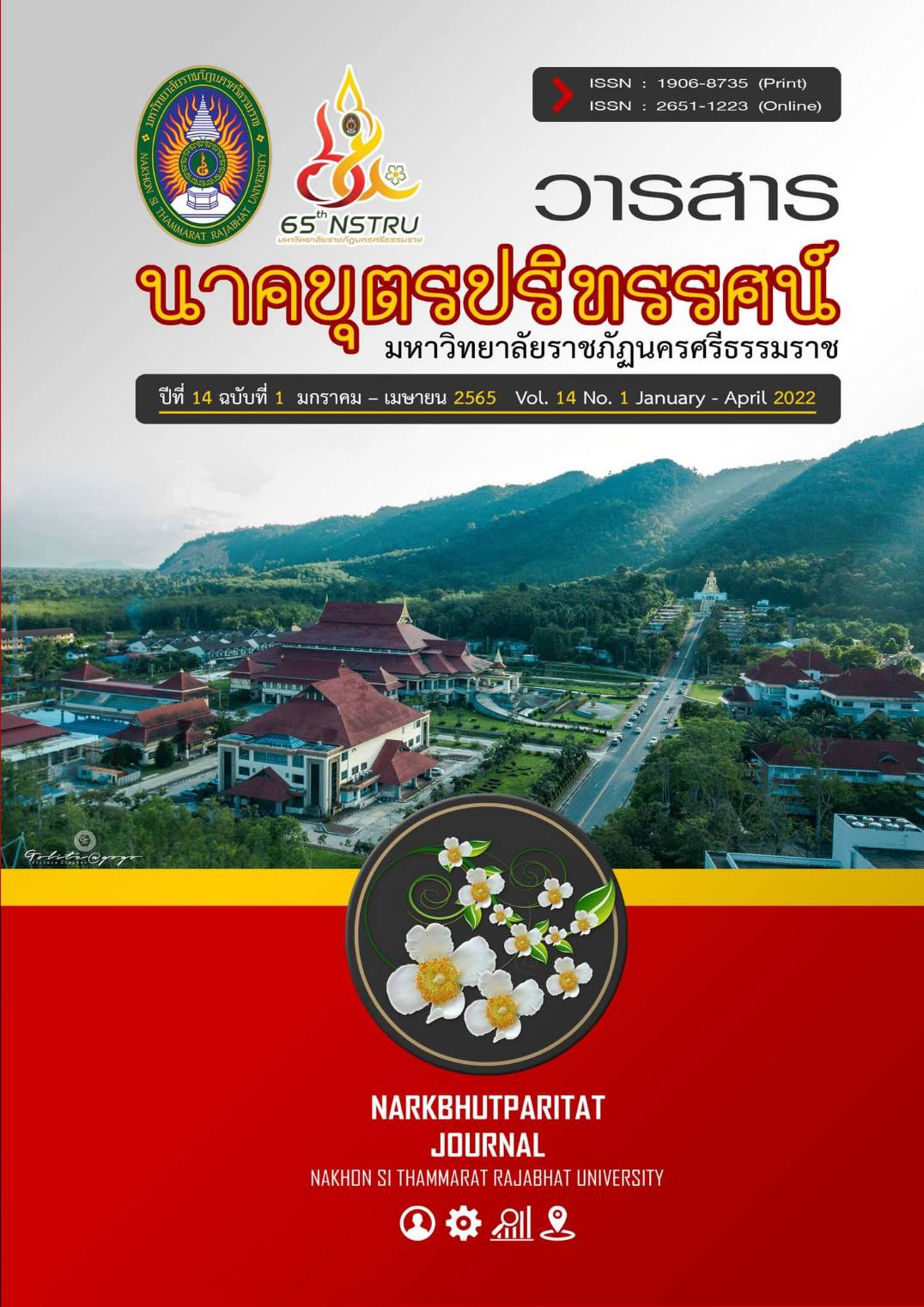The Development of Business English Speaking for Communication Course for Business English Students at Three Rajabhat Universities in Southern Thailand
Main Article Content
Abstract
The purposes of this research were to: 1) investigate the English speaking for communication abilities needed for business English students; 2) develop and examine the effectiveness of the business English speaking for communication course; and 3) examine and compare the business English students’ speaking abilities before and after implementation. This research used quasi-experimental method consisting of two phases: course development and course implementation. To develop the course, needs analysis was conducted based on the modified Oliva Model using the key informants: interviews with 24 experts and questionnaire survey with 132 business English students from Nakhon Si Thammarat Rajabhat University (NSTRU), Songkhla Rajabhat University, and Suratthani Rajabhat University. The instruments consisting of self-checklists, teacher and students’ s logs, the end of the course evaluation forms, semi-structured interviews, Business English speaking for communication instructional package, and the English oral test and scoring rubrics. The content validity was proven by IOC results. Then 32 third-year business English students at NSTRU obtained by cluster random sampling for course implementation. The results indicated that: 1) Students needed to be able to speak about the important topics in business, speak the appropriate language functions in the business topics, and speak with the pronounce sounds correctly and clearly, use varied and correct vocabulary, consistently use correct grammatical structure ,and use gestures appropriately; 2) The course development was design based on the theory of Backward design, the instructional process was based on scaffolding approach, and the assessment based on the concept of multiple assessments. The course was verified by experts and pilot study. The effectiveness of the instructional packages were 78/80 in cognitive domain and 80/80 in affective domain; and 3) The business English students’ speaking abilities according to the results of posttest scores were statistically and significantly higher than the pretest scores at the level .05.
Article Details

This work is licensed under a Creative Commons Attribution-NonCommercial-NoDerivatives 4.0 International License.
References
Brown, R.S. & Nation, P. (2009). Teaching Speaking: Suggestions for the Classroom. The Language Teacher. US: Pearson ESL.
Cohen, A.D. (1998). Assessing language ability in the classroom (2nd. ed.) Massachusetts: Heinle & Heinle Publishers.
Douglas, D. (2000). Assessing language for specific purposes. New york: Cambridge.
Kruckeberg, J. (2018). Competencies and KSAOs. London: Macmillan.
Phonsakorn, P. (2020). Communication education in Thailand. In PH, Ang & S. Ramanthan (Eds.), Communication education in ASEAN. (in Thai)
Lewis, J. (2016). Self-assessment in the classroom: A case study. In G. Brindley (ed.), The second language curriculum in action. Australia: National Centre for English Language Teaching and Research, Macquarie University.
Managhan, P. (2019). Public relations careers: in business and the community. New york: Fairchild Publications, Inc.
Oliva,P.F. (2009). Developing the Curriculum (12th. ed.). Boston: Pearson.
Phanit, T. (2019). Language abilities of NSTRU students. Office of Academic of Nakhon Si Thammarat Rajabhat University Meeting Minutes, (p.19). Nakhon Si Thammarat Rajabhat University (in Thai)
Richards, J.C. (2019). Approaches and methods in language teaching. US: Cambridge University Press.
Sujana, D. (2015). Establishing English competencies for students of tourism Department. Retrieved 2015, January 9, from http://www.geocities.com (in Thai)
Thronbury, S. (2008). How to Teach Speaking. England: Pearson Education.
Wiggins, G. & Mctighe, J. (2006).Understanding by Design. US: Prentice Hall.


